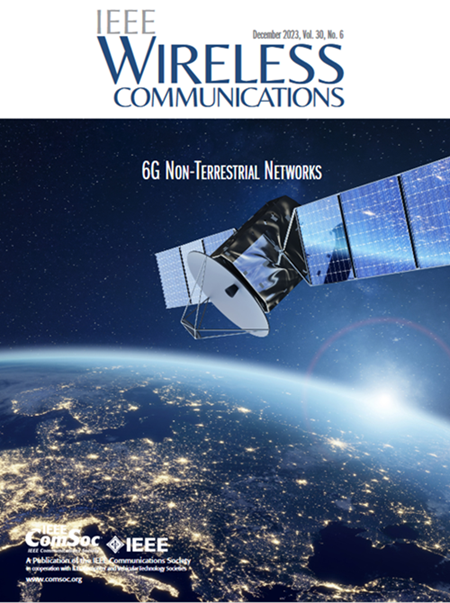基于计算机视觉的联合空间传感与通信系统:非源、自主和低延迟
IF 10.9
1区 计算机科学
Q1 COMPUTER SCIENCE, HARDWARE & ARCHITECTURE
引用次数: 0
摘要
随着每年数千颗卫星准备部署到外层空间,新的太空竞赛正在加剧。各公司正以前所未有的速度部署近地轨道卫星,以创建巨型星座。由于外空日益拥挤和危险,建立安全、高效、快速的卫星间通信是当前的重大挑战,是管理、维护和检查庞大空间通信网络的必要条件。联合传感和通信(JSC)提供了一个非凡的机会,通过利用感知到的周围信息来增强通信性能指标,包括频谱效率、波束训练等。因此,将JSC应用于空间环境感知可以显著提高日益拥挤的外层空间的星间通信性能。然而,传统的基于无线电频率的JSC在应用于外层空间卫星通信时面临着重大挑战——例如延迟和安全问题。这项工作提出了一种基于计算机视觉(CV)的联合空间传感和通信的新方法,用于目标检测、跟踪和预测,通过集成各种通信和传感技术来确保有效的卫星通信。我们演示了几个网络连接原型,使用适当的计算管理来提高各种场景中的能源效率、延迟和覆盖性性能。最后,我们调查和讨论了重大的技术挑战和未来的研究方向。本文章由计算机程序翻译,如有差异,请以英文原文为准。
Computer Vision-Based Joint Space Sensing and Communication Systems: Non-Source, Autonomy, and Low Latency
The new space race is intensifying as thousands of satellites are poised for deployment into outer space each year. Companies are deploying low-earth orbit satellites at an unprecedented rate to create mega-constellations. Because outer space is becoming increasingly crowded and hazardous, establishing safe, efficient, and rapid inter-satellite communications is now a major challenge, essential for managing, maintaining, and inspecting vast space communication networks. Joint sensing and communication (JSC) presents a remarkable opportunity to enhance communication performance metrics by leveraging sensed surrounding information, including spectrum efficiency, beam training, and more. As such, applying JSC for space environmental sensing could significantly enhance the performance of inter-satellite communications in ever-crowded outer space. However, traditional radio frequency-based JSC faces significant challenges - such as latency and security concerns - when applied to outer-space satellite communications. This work proposes a novel approach to joint space sensing and communication-based on computer vision (CV) for target detection, tracking, and prediction to ensure effective satellite communications by integrating various communication and sensing techniques. We illustrate several network connection prototypes using appropriate computing management to enhance energy efficiency, latency, and covertness performance in various scenarios. Finally, we investigate and discuss the significant technological challenges and future research directions.
求助全文
通过发布文献求助,成功后即可免费获取论文全文。
去求助
来源期刊

IEEE Wireless Communications
工程技术-电信学
CiteScore
24.20
自引率
1.60%
发文量
183
审稿时长
6-12 weeks
期刊介绍:
IEEE Wireless Communications is tailored for professionals within the communications and networking communities. It addresses technical and policy issues associated with personalized, location-independent communications across various media and protocol layers. Encompassing both wired and wireless communications, the magazine explores the intersection of computing, the mobility of individuals, communicating devices, and personalized services.
Every issue of this interdisciplinary publication presents high-quality articles delving into the revolutionary technological advances in personal, location-independent communications, and computing. IEEE Wireless Communications provides an insightful platform for individuals engaged in these dynamic fields, offering in-depth coverage of significant developments in the realm of communication technology.
 求助内容:
求助内容: 应助结果提醒方式:
应助结果提醒方式:


